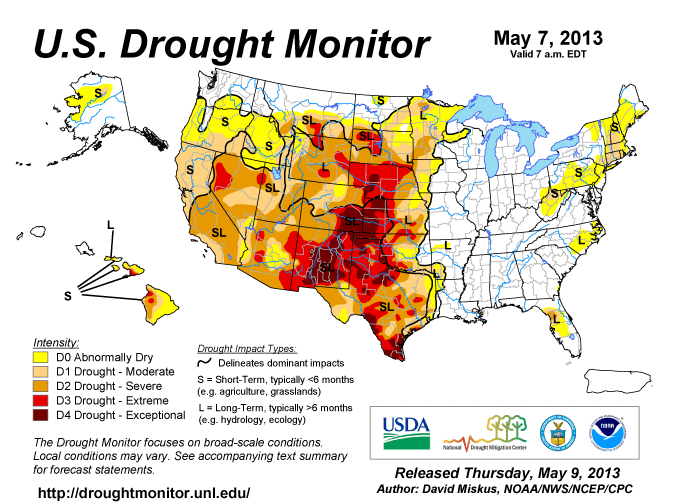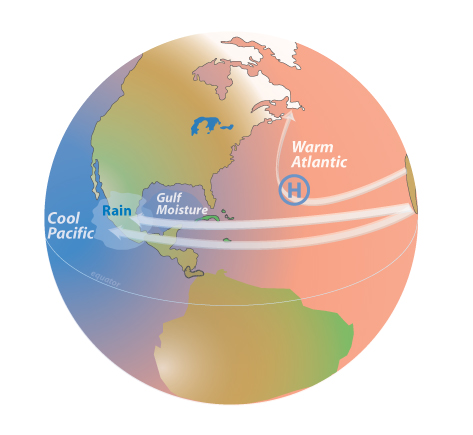While the Mississippi floods grab the headlines, Texas and the South are baking in a drought.
Crops and pastures withering may not have the same drama as sandbag brigades and breaking levees, but the weather is every bit as grim. When you add the border-to-border wildfires that have swept through Texas this year, the situation goes from grim to downright scary.

The current drought in the South and Southwest. Source: UNL.edu
Here’s the problem: Texas, the Southern Plains, and the Southeast are being tag-teamed. Two enormous weather forces are steering rainfall further north, leaving much of the South hot and dry. The forces in the Atlantic and Pacific have reinforced the same deadly pattern—drought in the South. The first of these forces has been the unusually warm conditions in the Atlantic, particularly in the Gulf of Mexico. When this happens, it typically creates more extreme weather for the South, hotter summers and colder, drier winters.
Add to this the La Niña in the Pacific. Over a million square miles of unusually cool water in the Tropical Pacific warps the globe’s normal wind and weather patterns. Unusually cool water accumulates off the West Coast. This creates a cooler wetter winter and spring in the Midwest and along the US/Canadian border, but it brings drier weather in the South.
.gif)

TOP: When the Atlantic is cool and the Pacific is warm, Gulf moisture pours into the US
BOTTOM: When the Atlantic is warm and the Pacific is cool, winds steer the moisture away from the US.
Both factors create dry weather in the South and both have been in play since last July. When the impact is combined, moisture from the Gulf of Mexico, which normally would move north and northeast into the US is steered due west. This was good news during last year’s hurricane season, when the stronger tropical trade winds steered hurricanes away from US shores. It has been bad news this winter and spring, when the wind patterns have steered rainfall away from the South.
The good news is that the La Niña is fading rapidly. Hang on until the West Coast waters warm up and the winds once again carry moisture to the South. True, much of the rain will be in the form of thunderstorms, but at least it will be wet. Until then, sigh, you’ll have to water those gardens.



.gif)








